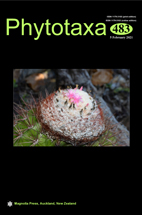Abstract
The status of the Maltese endemic Romulea melitensis remained doubtful since its description by Beguinot in 1907, primarily because plants with the morphological characters as referred in the diagnosis have not been substantiated in situ. A sand crocus with the combination of a smallish, dark violet corolla with a yellow throat and perianth segments up to 1.5 mm wide have never been witnessed in the Maltese Islands. A detailed analysis of the protologue and the type of R. melitensis has resulted that when Beguinot examined the 30-year-old exsiccatae, two important characters were misinterpreted, leading to the current ambiguous status of R. melitensis. A detailed account accompanied by specific illustrations and tabulated datasets are given to address this taxonomic misconception. In effect, R. melitensis has wider tepals and the dark colour of the corolla referred in the protologue is exhibited only at the abaxial surface of the tepals in some individuals. Under this adjusted morphological approach, ten populations corresponding to R. melitensis have been found in the Maltese islands, three of which matching completely with the taxon’s lectotype. In addition, morphological, palynological and chorological studies on these populations strongly suggest that R. melitensis is a hybrid between R. columnae and R. variicolor - a Siculo-Maltese endemic species. An identification key to the species of Romulea occurring or reported in the past from the Maltese Islands is supplied in this work.

